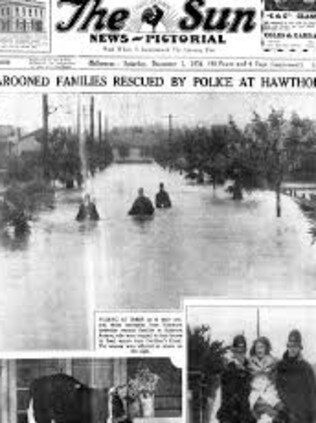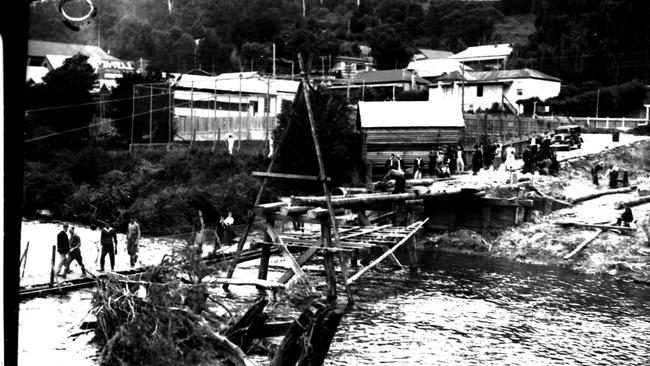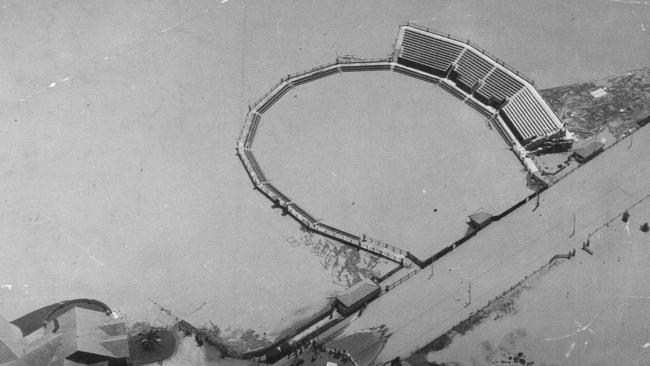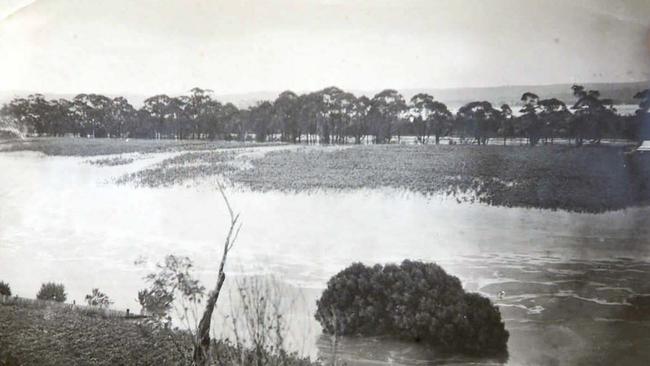Victorian floods in 1934 took 35 lives and cut off regional towns
A POWERFUL storm lashed Victoria for two days in 1934, leaving 35 people dead. Dozens of Melbourne’s riverside suburbs and swathes of Gippsland were inundated.

VIC News
Don't miss out on the headlines from VIC News. Followed categories will be added to My News.
AS the old saying goes, if you don’t like Melbourne’s weather, wait five minutes.
But more than 48 hours of solid rain in late November 1934 disproved that theory, with deadly results.
WORST WEATHER IN YEARS TO HIT MELBOURNE
A powerful storm lashed Victoria for two days that month, buffeting the state with high winds and pounding rain, and leaving 35 people dead.
Torrential rain began across eastern parts of Victoria on November 29, 1934 as a cold front crossed the state and a low pressure system developed and deepened in Bass Strait.
The big, deep low drove moisture-laden gale-force southerly and south-westerly winds ashore from Bass Strait.
A LOOK BACK AT 100 YEARS OF FLOODING IN MELBOURNE

The period from November 29 to December 1, 1934 was one of the wettest Melbourne had ever seen, with 140mm of rain in the 48 hours to December 1.
The rain fell on soil that was already sodden from an unusually wet spring.
It was far worse in the hills and ranges east of Melbourne and in South Gippsland, where falls over the same period exceeded 350mm in some areas.
This filled rivers and creeks in the Melbourne basin and in Gippsland overflowing.


Roads were inundated and landslides and bridges washed away in the flood cut others. Towns were isolated as the waters rose.
Trees undermined by the saturated ground fell in their thousands as gale-force winds persisted across southern Victoria.
The storm chilled temperatures, blanketing the high country in out-of-season snow.
Many of the storms victims drowned in floodwaters in the Yarra Valley. Several were electrocuted by downed powerlines.
Another 17 men died at sea aboard the cargo steamer TSS Coramba.
The Coramba was laden with wool and condensed milk from Warrnambool, and bound for Melbourne.
Captain John Dowling saw his barometer dropping, a sign of poor weather, and asked for permission from his shipping company to delay the trip.

He was ordered to press on, and assured that the ship would beat the worst of it to Port Phillip Heads.
The Coramba went down off Phillip Island at the height of the storm on November 30 and was not seen again until an expedition in 2011 found it in 66m of water.
Up to 3000 buildings across Victoria were damaged by the storm, with around 6000 people left homeless.
MORE JAMIE DUNCAN: SEE HOW MELBOURNE’S POOREST PEOPLE LIVED IN TODAY’S HIP INNER SUBURBS
CONSCRIPTION FIGHT THAT DIVIDED AUSTRALIA
HOW SIDNEY MYER WENT FROM DOOR-TO-DOOR SALES TO DEPARTMENT STORE MOGUL
Farmers suffered enormous losses of stock, particularly in Gippsland, where those animals that were not washed into swollen watercourses like the Latrobe River succumbed to exposure caused by the heavy rain and freezing wind.
Others had their crops flattened or submerged.

The Gippsland railway line and the Princes Highway were washed away in many locations and towns including Trafalgar, Moe, Morwell and Traralgon were isolated.
The Yallourn open cut mine filled with at least 50m of water, causing severe power restrictions.
In Melbourne, the Yarra became a lake from Warrandyte all the way to South Yarra as the flood spread across the river’s alluvial plain, fed by its many tributaries.
Gardiners Creek rose so high that it inundated the courts at the Kooyong Lawn Tennis Club, leaving only the top tiers of the brand new centre court exposed.
The disaster produced one of the Sun News-Pictorial’s most famous front pages on December 1, 1934.

On it, three policemen in wet weather gear and wearing bobby hats were pictured waist deep in water in Kaikoura Avenue, Hawthorn, in a bid to rescue people trapped by the flood.
A gas plant near the Yarra in Heidelberg was 7m under water, cutting surrounding suburbs off from gas supplies.
The river between Heidelberg and Bulleen was around 2.4km wide during the flood.
All along the river, in suburbs like Richmond, Abbotsford and South Yarra, houses were awash, while on the western side of town, Moonee Ponds, Macaulay and Kensington saw large-scale evacuations.
Beaches all around Port Phillip lost bathing boxes and jetties, and the wreckage of many vessels dashed in the storm littered the shore.
At Chelsea, rescuers — many of them volunteers — used boats to pluck more than 1500 women and children as 700 houses went under.
Hundreds were forced to flee houses in Abbotsford, Brighton and Gardenvale.
Overall, more than £250,000 damage was reported. That’s more than $23.75 million today.


